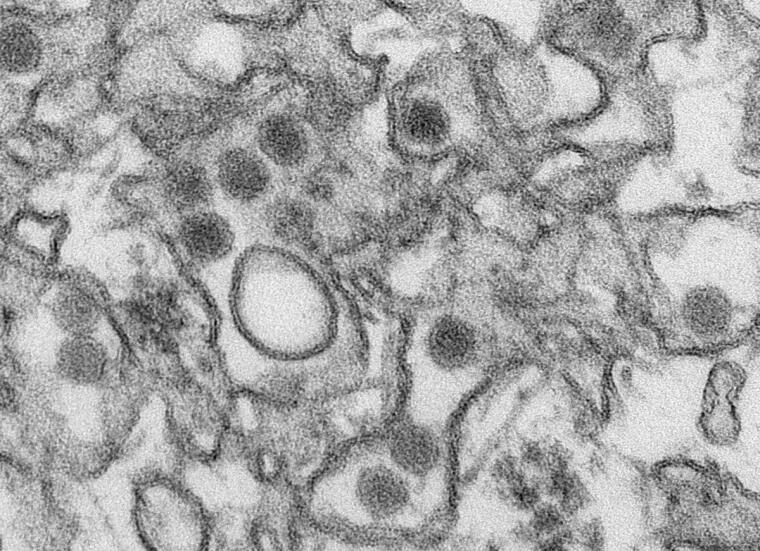U.S. issues treatment guidelines for infants exposed to Zika

U.S. health officials on Tuesday issued interim guidelines for health care professionals in the United States caring for infants born to mothers who traveled or lived in an area with Zika virus transmission during pregnancy.
The guidelines from the U.S. Centers for Disease Control and Prevention call for pediatricians to work closely with obstetricians caring for pregnant women exposed to the virus during pregnancy, monitoring fetal ultrasounds and testing infants with signs of a birth defect called microcephaly marked by small head size.
The guidelines come after thousands of infants in Brazil were born with microcephaly, which was believed to be linked to Zika infections. In studies of the current outbreak in Brazil, genetic material from the Zika virus has been identified in studies of brain tissue, placenta and amniotic fluid from several infants with microcephaly and from miscarried fetuses from women infected with the virus.
Although Zika transmission has not yet been reported in the United States, mosquitoes that carry the infection are endemic to specific regions of the United States, and experts believe transmission is likely in the coming months as the weather heats up.
In the interim guidelines for pediatricians, the CDC recommends that infants with microcephaly born to women exposed to Zika while pregnant should be tested for the virus. For infants without microcephaly but whose mothers received a positive or inconclusive test for the virus, the guidelines call for the child to be tested for possible Zika infection.
The guidance also informs U.S. doctors that Zika is a nationally notifiable condition, meaning that suspected cases must be reported to state and territorial health departments.
No treatments or vaccines are available for Zika infections.
 Christians don't have to affirm transgenderism, but they can’t express that view at work: tribunal
Christians don't have to affirm transgenderism, but they can’t express that view at work: tribunal Archaeology discovery: Medieval Christian prayer beads found on Holy Island
Archaeology discovery: Medieval Christian prayer beads found on Holy Island Presbyterian Church in America votes to leave National Association of Evangelicals
Presbyterian Church in America votes to leave National Association of Evangelicals Over 50 killed in 'vile and satanic' attack at Nigerian church on Pentecost Sunday
Over 50 killed in 'vile and satanic' attack at Nigerian church on Pentecost Sunday Ukrainian Orthodox Church severs ties with Moscow over Patriarch Kirill's support for Putin's war
Ukrainian Orthodox Church severs ties with Moscow over Patriarch Kirill's support for Putin's war Islamic State kills 20 Nigerian Christians as revenge for US airstrike
Islamic State kills 20 Nigerian Christians as revenge for US airstrike Man who served 33 years in prison for murder leads inmates to Christ
Man who served 33 years in prison for murder leads inmates to Christ


 Nigerian student beaten to death, body burned over ‘blasphemous’ WhatsApp message
Nigerian student beaten to death, body burned over ‘blasphemous’ WhatsApp message 'A new low': World reacts after Hong Kong arrests 90-year-old Cardinal Joseph Zen
'A new low': World reacts after Hong Kong arrests 90-year-old Cardinal Joseph Zen Iran sentences Christian man to 10 years in prison for hosting house church worship gathering
Iran sentences Christian man to 10 years in prison for hosting house church worship gathering French Guyana: Pastor shot dead, church set on fire after meeting delegation of Evangelicals
French Guyana: Pastor shot dead, church set on fire after meeting delegation of Evangelicals ‘Talking Jesus’ report finds only 6% of UK adults identify as practicing Christians
‘Talking Jesus’ report finds only 6% of UK adults identify as practicing Christians Mission Eurasia ministry center blown up in Ukraine, hundreds of Bibles destroyed: 'God will provide'
Mission Eurasia ministry center blown up in Ukraine, hundreds of Bibles destroyed: 'God will provide' Church holds service for first time after ISIS desecrated it 8 years ago
Church holds service for first time after ISIS desecrated it 8 years ago Burger King apologizes for 'offensive campaign' using Jesus' words at the Last Supper
Burger King apologizes for 'offensive campaign' using Jesus' words at the Last Supper Uganda: Muslims abduct teacher, burn him inside mosque for praying in Christ’s name
Uganda: Muslims abduct teacher, burn him inside mosque for praying in Christ’s name